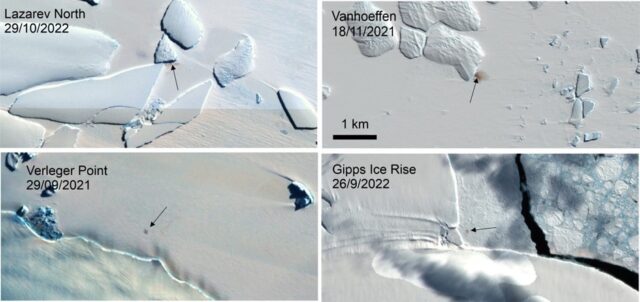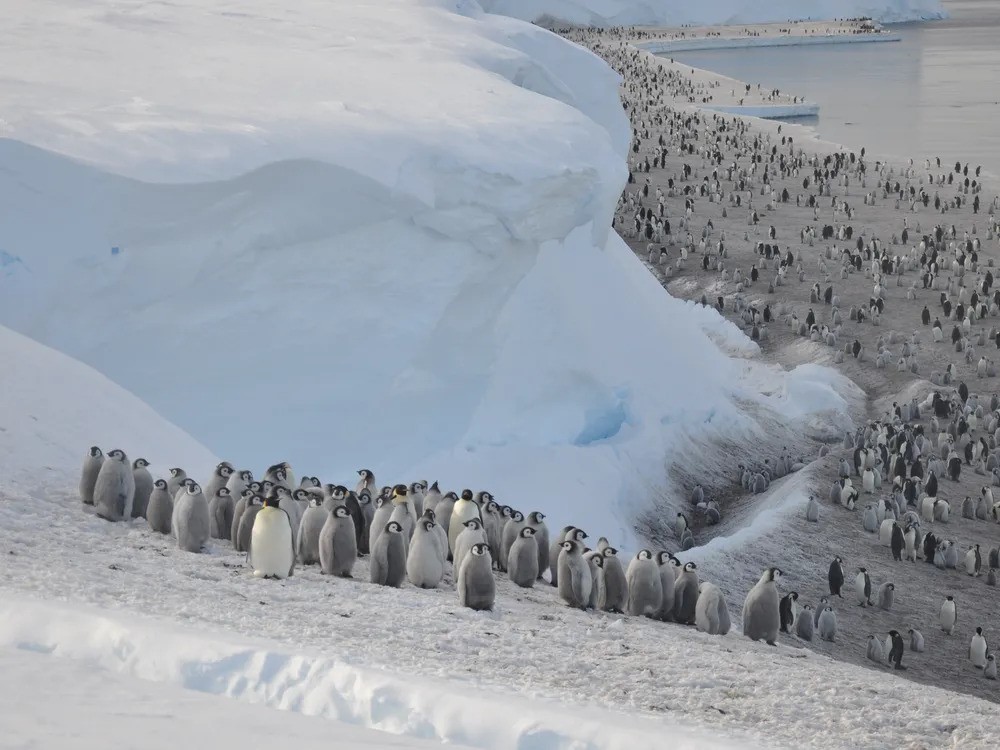Emperor penguins are very unique species of penguins and have long been symbols of resilience in the face of adversity. Yet, as the spectre of climate change looms ever larger, their future has seemed increasingly uncertain. Despite being the largest penguins in the world, they’re at risk of disappearing because of human-caused climate change.
However, in a recent breakthrough, researchers have identified four previously unknown emperor penguin colonies through satellite imagery. This discovery offers a glimmer of hope amidst the gloom of climate change while shedding light on the resilience and adaptability of these remarkable birds.
Find out more about this unique species and why their discovery is important.
Satellite Technology: A Game-Changer in Conservation
Technology has emerged as a powerful ally in the quest to protect vulnerable species and ecosystems. Satellite imagery, with its ability to penetrate remote and inaccessible regions, has revolutionised our understanding of the natural world. By harnessing the capabilities of satellites like Sentinel-2 and Maxar WorldView-2, researchers have unlocked a treasure trove of information, shedding light on previously undiscovered emperor penguin colonies.
Satellite technology has proven instrumental in locating these colonies, offering a bird’s-eye view of Antarctica’s vast wilderness. By analysing the staining of guano on the ice, researchers can pinpoint the presence of penguin colonies from space. This innovative approach has enabled scientists to monitor colony location changes and track these resilient birds’ movements.
Description: Scientists from British Antarctic Survey have discovered four previously unknown emperor penguin breeding sites

Photo Credit: Copernicus
Source: British Antarctic Survey
Why are the Emperor Penguins Species Important?
Emperor penguins, renowned for their regal stature and resilience in the harshest of environments, have long been the focus of scientific study. Standing up to four feet tall and weighing as much as 100 pounds, they are the largest of their kind and among the most resilient.
Yet, their very survival hinges on the stability of sea ice—a habitat increasingly under threat due to climate change. As global temperatures rise and ice shelves melt at alarming rates, the future of these majestic birds hangs in the balance. Sea ice is becoming less reliable, making the penguins face unprecedented challenges in their quest for suitable breeding grounds. According to sobering predictions, if carbon emissions continue unabated, many of the emperor penguin colonies could face extinction by the end of the century.
Researchers have unlocked a new realm of discovery by harnessing the power of satellites like the European Space Agency’s Sentinel-2 and Maxar WorldView-2, uncovering hidden breeding sites that were previously beyond reach (Fretwell & Trathan 2021).
Published in the journal Antarctic Science, the study unveils a surprising discovery: adding approximately 5,700 pairs of emperor penguins to the estimated population. This discovery puts a spotlight in the ongoing narrative of environmental degradation and species loss. But against the backdrop of a warming world, the emergence of new colonies represents a testament to the enduring spirit of life in one of Earth’s harshest environments.
What did the Satellite Find?
Emperor penguins lead a unique lifestyle, relying on sea ice as their breeding ground. However, as climate change alters the Antarctic landscape, the stability of this sea ice becomes increasingly uncertain. The discovery of these new colonies, bringing the total count to 66 known emperor penguin colonies, offers hope amidst concerns about the species’ long-term survival.
The first of the newly discovered colonies, tentatively named ‘Lazarev North,’ lies on the northern side of the Lazarev Ice Shelf, nestled along the Dronning Maud Land coast. This colony, though small in size, hints at the adaptability of these resilient birds as they seek refuge in new territories in response to changing ice conditions.
Venturing further west, another colony emerges at Verleger Point on the coast of Marie Byrd Land in West Antarctica, with an estimated ~500 pairs. Heading north, a third colony reveals itself north of the eastern side of the West Ice Shelf, surrounded by towering icebergs and frigid waters. Lastly, another colony of 200 pairs were seen towards the northern side of the Gipps Ice Rise, made visible possible by a fortuitous shift in ice shelf topography.
Understanding the Significance of the Discovery
The discovery of these new colonies underscores the importance of satellite technology in monitoring and conserving vulnerable species. Scientists, leveraging the high-resolution imagery provided by satellites like the European Commission’s Copernicus Sentinel-2 and the Maxar WorldView-3, have been able to track the movements and behaviours of emperor penguins with unprecedented accuracy. This innovative approach has not only led to the identification of previously unknown colonies but has also provided insights into the dynamic nature of penguin habitats.
One of the most remarkable findings of the study is the relocation of a colony that was once thought to have disappeared entirely. These resilient birds, faced with the loss of their traditional breeding grounds due to ice breakup, have adapted by establishing themselves in new locations—an inspiring example of their ability to navigate changing environmental conditions.
While the discovery of these new colonies offers a ray of hope, it does not diminish the overarching threat posed by climate change. With sea ice reaching record lows and the pace of global warming showing no signs of abating, the long-term prospects for emperor penguins remain uncertain.
Implications for Conservation: Protecting Antarctica’s Precious Biodiversity
As we celebrate these newfound colonies, we are reminded of the urgent need for conservation efforts to safeguard the emperor penguin’s habitat. These discoveries not only expand our understanding of their distribution but also underscore the critical role that satellite technology plays in conservation initiatives.
Armed with this knowledge, we must redouble our efforts to combat climate change and preserve the icy wilderness these magnificent creatures call home. For their survival lies the hope for a brighter, more sustainable future for generations.
Conclusion
In a time where the impacts of climate change are increasingly felt, the survival of these iconic birds is a testament to the power of adaptation and the importance of conservation efforts. As we grapple with the existential threat posed by environmental degradation, the discovery of four new emperor penguin colonies in Antarctica offers a glimmer of hope in the face of climate change. Leveraging satellite technology to uncover the emperor penguin species has expanded our realm of exploration and demonstrated how technological innovation can aid in addressing present climate challenges and rectifying already turbulent circumstances. As custodians of the Earth, we must take proactive measures to safeguard these delicate ecosystems for generations to come. Together, we can ensure the enduring prosperity of emperor penguins within their icy domain for years ahead.
Featured image source: smithsonianmag
Found it interesting and would like more in the mail?




